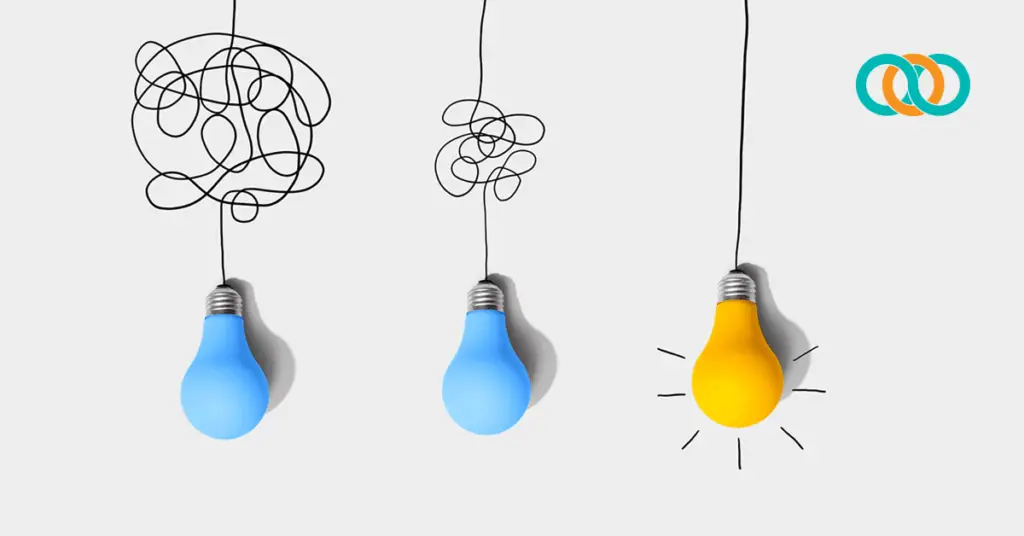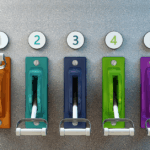When you hear the word “sustainable,” your mind might go straight to recycling bins and wind farms. But when it comes to instructional design, sustainable has nothing to do with being “green”—and everything to do with saving time, money, and sanity.
Sustainable instructional design is about creating learning materials that don’t just work for one rollout or one group of learners. Whether are a corporate employee or an independent instructional design consultant, the goal is the same: design once, simplify updates, and make it last.
It’s a practical, budget-friendly way to ensure your learning investment keeps paying off—long after the initial launch.
What is Sustainable Instructional Design?
Sustainable instructional design is the practice of developing learning experiences that:
- Are immediately effective for the target audience.
- Remain relevant and functional as the organization or content evolves.
- Can be easily updated or repurposed without starting from scratch.
It’s not about flashy graphics or trendy tools. It’s about thoughtful planning and design choices that stand the test of time.
Why It Matters: The Hidden Costs of Rework
If you’ve ever updated an eLearning module because one small policy changed—or had to re-record a voiceover just to change the name of a product—you’ve felt the pain of unsustainable design.
Here’s what often happens:
- A course is built to match the needs of one team or moment in time.
- Six months later, the org changes or the tech shifts.
- Suddenly, you’re paying for redesign, reprogramming, and reapproval—all over again.
That’s not just frustrating. It’s expensive.
A 20-minute eLearning module can easily cost five figures to design, develop, and launch. Multiply that cost every time you have to update it—and you’ve got a serious case for sustainability.
Sustainable ≠ Static
Let’s be clear: sustainable doesn’t mean “unchangeable.” It means flexible by design. A sustainable course anticipates that things will change and is built in a way that makes updates painless.
For example:
- Use templates and design systems that your team can quickly replicate and update.
- Break learning into modular chunks (microlearning) that can be swapped out or refreshed individually.
5 Ways to Design for Sustainability
If you’re ready to start designing smarter, here are five practical ways to make your next learning project more sustainable:
1. Plan for Change
One of the biggest mistakes in instructional design is assuming the content you’re building today will still be correct and relevant in one year, three years, or five years. Spoiler: It won’t be.
Before you even start storyboarding, ask your SMEs and stakeholders a simple but powerful question:
“What’s likely to change in the next 12–24 months?”
You might hear:
- “We’re currently shopping for a new CRM.”
- “Our compliance policy gets updated every year with changes to the laws.”
- “We’re planning to restructure the customer service team.”
These changes might sound small now, but they can cause major headaches later if they’re hardcoded into your course. By identifying these areas early, you can design in a way that keeps those moving parts flexible.
What to look out for:
- Policies or procedures that are under review.
- Technology platforms that are being upgraded or replaced.
- Org structures (titles, team names, roles) that are shifting.
- Product or service lines that are launching or sunsetting.
- Leadership or branding that could affect tone or terminology.
The key is to isolate these “likely-to-change” elements and keep them out of static assets like long recorded voiceover or baked-in graphics. Instead, design with swap-ability in mind.
Pro Tip: Use clear placeholders like [Insert Policy Here] or [Platform Screenshot], and create a content inventory that flags high-change areas for easy updates later.
Bonus for Instructional Design Consultants: Always ask your client what changes they anticipate over the next year. It positions you as a strategic partner and helps them avoid costly rework down the road.
2. Build Modular Content
Think LEGO blocks, not concrete slabs. One of the best ways to create sustainable learning is to design modular content—self-contained chunks that can be reused, reordered, or swapped out without disrupting the whole system.
If you’ve worked with SCORM (Sharable Content Object Reference Model), you’re already familiar with SCOs, or Scalable Content Objects. These are exactly what they sound like—individual, stand-alone learning pieces that can be packaged and reused across different training programs.
Let’s say you’re building training for a call center. Most of your modules will include the process of verifying the caller’s identity. Instead of building the “Verify the Caller” step into each course for call center reps, create a separate, standalone SCO called “Verify the Caller.” That object or SCO can be re-used in every course going forward without modification. By separating out content objects, you can literally build new courses by simply assembling SCOs rather than having to develop a whole new course.
In this example, if the verification process changes—say a screen changes or management updates the script—you only have to update the “Verify the Caller” SCO and republish in the courses. No need to update every single course.
This kind of modular approach makes content:
- Easier to scale across roles or regions
- Faster to update when processes or policies change
- More flexible for personalizing learning paths by role, location, or experience level
Tools like Articulate Rise let you create reusable blocks or templates. Think about modularity when you organize your content using shared libraries and variables.
Pro Tip: Modular design is especially helpful in fast-changing industries like finance, healthcare, and tech, where content updates are frequent and timelines are tight.
3. Use Tools with Flexibility in Mind
The tools you choose can make or break your ability to design sustainably. It’s not just about features—it’s about how easily you can update, reuse, and republish content when things change (and they will change).
Look for authoring tools that offer:
- Modular design features (like blocks or sections you can repurpose).
- Media libraries with centralized assets.
- Responsive design so your content works across devices without rebuilding.
- Version control or cloud-based collaboration features to track changes.
Popular tools like Articulate Rise are go-to tools for many instructional designers because they offer these kinds of efficiencies.
If you’re working as an instructional design consultant, having these tools in your toolkit—and knowing how to use them strategically—is a huge value-add for your clients. You’re not just delivering a course; you’re building an adaptable system that supports long-term learning goals.
Pro Tip: Set up a naming convention and folder structure from the start—especially when using shared assets or templates. Nothing slows down updates like hunting for “finalfinal_version3_edited_reallyfinal.pptx.”
4. Document Everything
Let’s be honest—no one likes documentation. But if you’ve ever inherited a half-finished course with no notes, no version history, and no idea what the original intent was… you know how painful it can be.
Sustainable instructional design depends on good documentation. That doesn’t mean a 30-page manual, but it does mean having clear, accessible information about:
- What was built (e.g., course outline, content inventory).
- How it works (e.g., triggers, branching logic, navigation flow).
- Where it lives (e.g., LMS link, shared folders, source files).
- What’s variable (e.g., what will likely need future updates).
This is especially important when working with instructional design consultants or cross-functional teams. Documentation keeps knowledge from walking out the door when someone leaves a project.
Good documentation isn’t just about staying organized—it’s about future-proofing your learning ecosystem. It allows updates to happen faster, with fewer mistakes, and keeps everyone on the same page (literally).
Who Benefits From Sustainable Design?
Pretty much everyone:
- Instructional Designers save time and reduce repetitive work.
- Project Managers avoid budget overruns from unexpected rework.
- Organizations get more value from every dollar spent on training.
- Learners get consistent, accurate, and updated experiences.
If you’re a freelancer or instructional design consultant, being known for delivering sustainable design is also a competitive advantage. It shows that you’re not just checking boxes—you’re thinking long-term and helping clients future-proof their learning investment.
Final Thoughts: Start Small, Think Long-Term
Sustainable instructional design doesn’t have to mean more effort—it just means smarter effort up front. Start by building templates. Standardize your file structure. Think modular. Ask your SMEs and stakeholders what’s likely to change.
Because the real cost isn’t in designing it once. It’s in designing it again when you didn’t have to.
Download Your Copy of Quick-Start Guide: Sustainable Instructional Design
Ready to Work with Us?
Does your L&D team have more projects than people? TrainingPros has been named a Top 20 Staffing Company internationally by Training Industry, and recognized as a Smartchoice® Preferred Provider by Brandon Hall Group for 2025. We’re also proud to be named a Champion of Learning by the Association for Talent Development (ATD)—an international honor that reflects our dedication to excellence in corporate learning. These accolades underscore TrainingPros’ unwavering commitment to delivering high-quality, tailored training solutions.
If your projects need instructional design consultants, eLearning developers, or other L&D consultants for your custom content projects, reach out to one of our industry-expert relationship managers today.
When you have more projects than people™, let TrainingPros find the right consultant to start your project with confidence. Schedule a consultation today.
- 1share
- LinkedIn0
- Twitter0
- Facebook0
- Love This1











